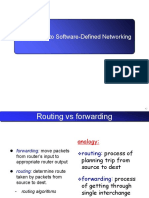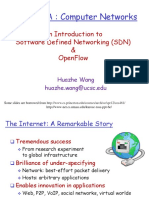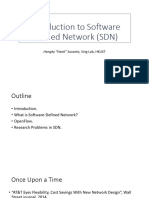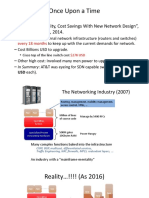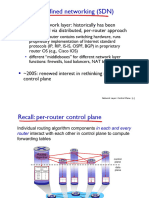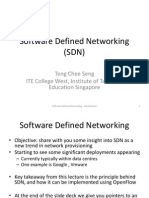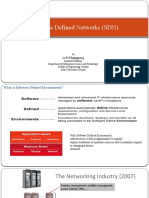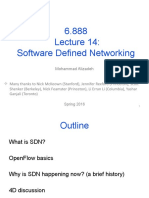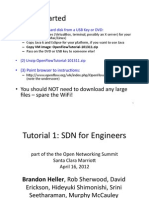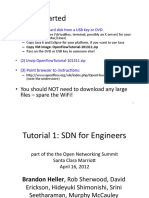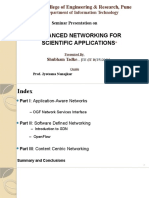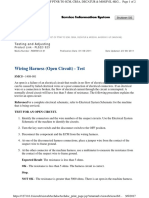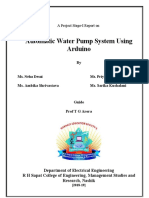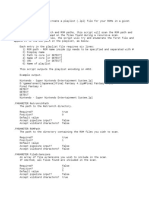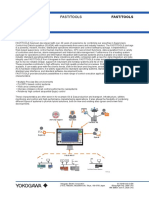0% found this document useful (0 votes)
112 views45 pagesSDN Control and Data Plane Overview
This document discusses software defined networks (SDNs). SDNs separate the network control plane from the forwarding plane, with a control plane controlling multiple devices. This allows for centralized network control and programming, more flexibility, and faster innovation compared to traditional networks which have control and forwarding integrated into individual devices. The document outlines SDN architecture, controllers, simulations, research areas and applications. It also discusses problems with traditional networks like slow convergence and distributed control.
Uploaded by
Ritesh PatelCopyright
© © All Rights Reserved
We take content rights seriously. If you suspect this is your content, claim it here.
Available Formats
Download as PDF, TXT or read online on Scribd
0% found this document useful (0 votes)
112 views45 pagesSDN Control and Data Plane Overview
This document discusses software defined networks (SDNs). SDNs separate the network control plane from the forwarding plane, with a control plane controlling multiple devices. This allows for centralized network control and programming, more flexibility, and faster innovation compared to traditional networks which have control and forwarding integrated into individual devices. The document outlines SDN architecture, controllers, simulations, research areas and applications. It also discusses problems with traditional networks like slow convergence and distributed control.
Uploaded by
Ritesh PatelCopyright
© © All Rights Reserved
We take content rights seriously. If you suspect this is your content, claim it here.
Available Formats
Download as PDF, TXT or read online on Scribd
/ 45

